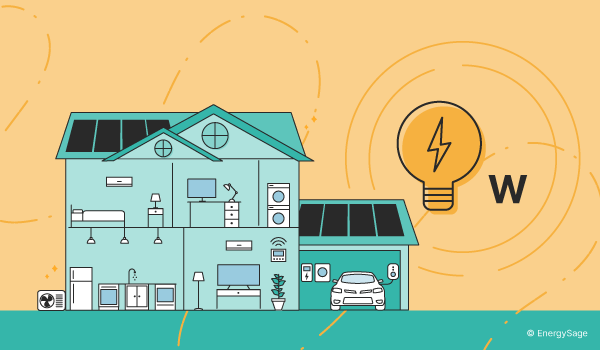How Many kW is a Normal House?
Understanding the Power Consumption of a Typical Household
Introduction
When it comes to managing our electricity consumption, understanding how many kilowatts (kW) a typical house uses is crucial. Electricity powers our homes, from essential appliances to modern gadgets, making it an integral part of our daily lives. By knowing the average kW consumption, we can make informed decisions to reduce our energy usage, conserve resources, and save money on our utility bills.
What is a Kilowatt (kW)?
Before diving into the average power consumption of a normal house, let’s define what a kilowatt is. A kilowatt (kW) is a unit of power that measures the rate at which energy is consumed or produced. One kilowatt is equal to 1,000 watts. It is a standard unit used by utility companies to measure electricity usage.
Factors Affecting Power Consumption
The power consumption of a house can vary significantly based on several factors. Some of the main factors that influence electricity usage in a household include:
1. Size of the House: Larger houses generally consume more electricity than smaller ones due to the increased number of rooms and appliances.
2. Number of Occupants: The more people living in a house, the higher the power consumption tends to be, as there is a greater demand for electricity to run various devices simultaneously.

3. Climate and Weather Conditions: Extreme temperatures, whether hot or cold, can lead to higher energy consumption due to the increased use of heating, ventilation, and air conditioning (HVAC) systems.
4. Energy Efficiency of Appliances: Older or less efficient appliances consume more power than newer, energy-efficient models.
5. Usage Patterns: The lifestyle and daily routines of the occupants can impact electricity consumption. For example, those who frequently use energy-intensive devices like washing machines and air conditioners will have higher energy usage.
Average kW Consumption of a Normal House
According to the U.S. Energy Information Administration (EIA), the average residential electricity consumption in the United States was about 877 kWh per month in 2020. This figure translates to an average power consumption of approximately 1.19 kW (877 kWh ÷ 30 days ≈ 29.23 kWh/day ÷ 24 hours ≈ 1.22 kW).
It’s important to note that this figure can vary significantly depending on location, lifestyle, and the factors mentioned above. For instance, houses in regions with harsh winters or scorching summers tend to consume more electricity to maintain comfortable indoor temperatures. For evaporative air conditioner sizes in paralowie read here.

Ways to Reduce Power Consumption
To lower the electricity consumption of your household and save on energy costs, consider implementing the following energy-saving tips:
1. Upgrade to Energy-Efficient Appliances: Invest in appliances with ENERGY STAR ratings, which are designed to consume less energy without compromising performance.
2. Unplug Unused Devices: Even when not in use, many electronic devices continue to draw power. Unplug chargers, gaming consoles, and other electronics when they are not actively being used.
3. Use LED Lighting: Replace traditional incandescent bulbs with energy-efficient LED bulbs, which consume significantly less energy and have a longer lifespan.
4. Adjust Thermostat Settings: Set your thermostat to reasonable temperatures in both summer and winter. Consider using programmable thermostats to optimize energy usage.
5. Seal Air Leaks: Properly insulate your home and seal any air leaks around windows and doors to prevent energy wastage.
6. Opt for Natural Lighting: Make the most of natural light during the day by opening curtains and blinds, reducing the need for artificial lighting.
7. Limit Water Heater Usage: Lower the temperature of your water heater and consider using cold water for laundry when possible.
Conclusion
Understanding how many kilowatts a normal house consumes allows us to be more mindful of our energy usage and make informed decisions to reduce our environmental footprint. By adopting energy-saving practices and investing in energy-efficient appliances, we can not only save on utility bills but also contribute to a more sustainable future.
Remember that the average kW consumption mentioned here is just a general figure and can vary based on various factors. To get a precise estimate of your household’s electricity consumption, consider reviewing your utility bills and consulting with your local energy provider. By making conscious efforts to conserve energy, we can create a positive impact on both our wallets and the environment.


